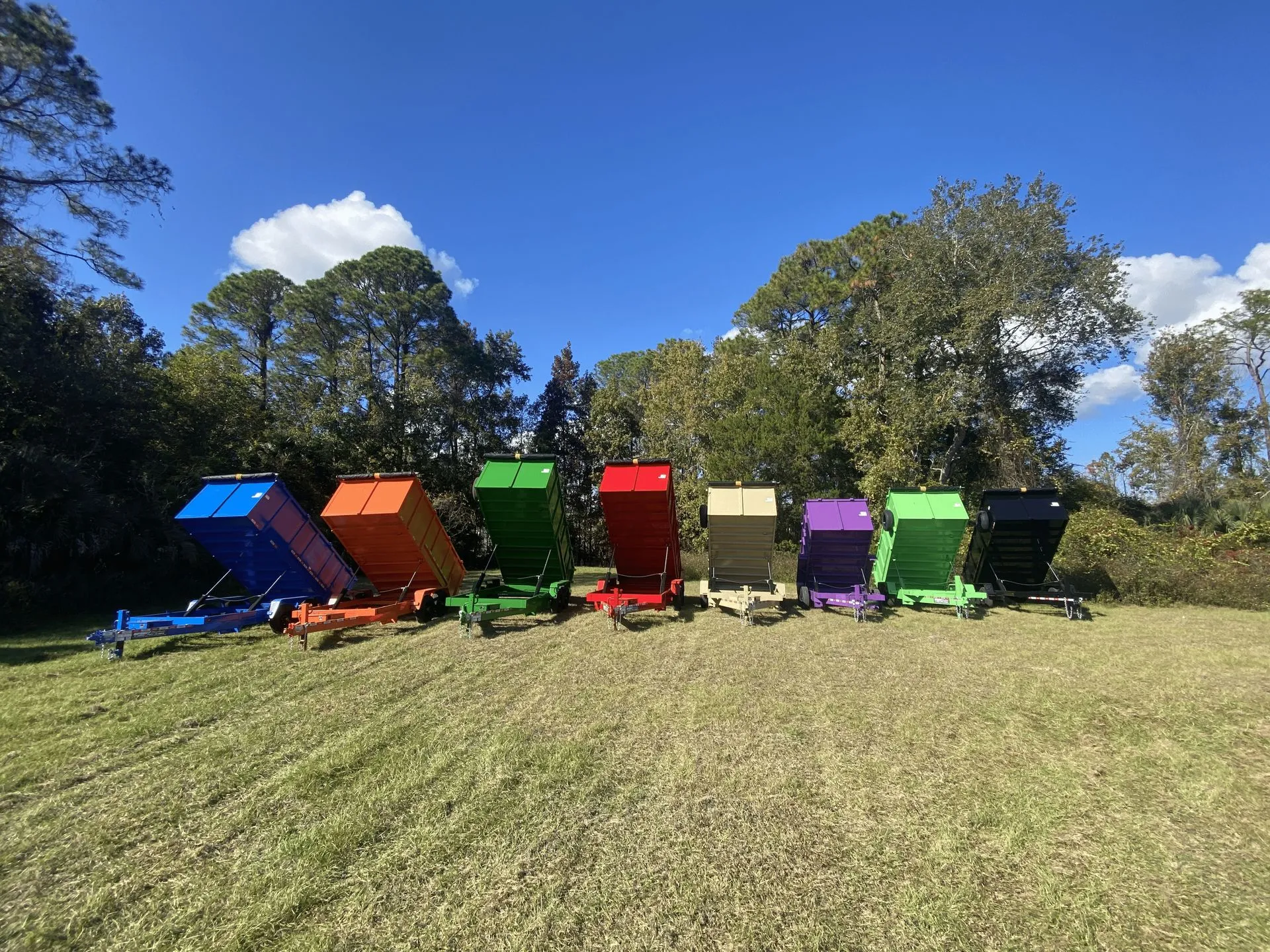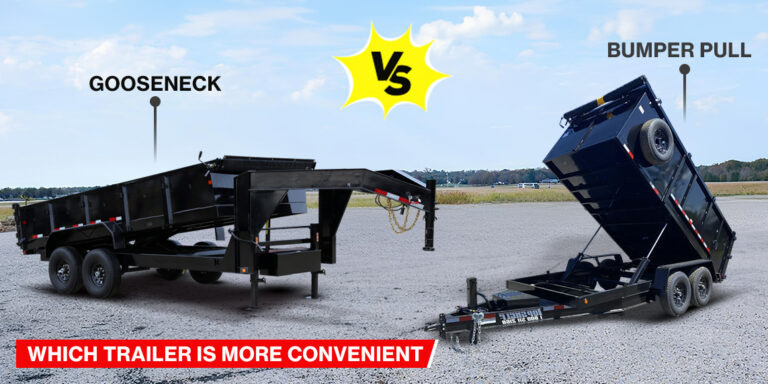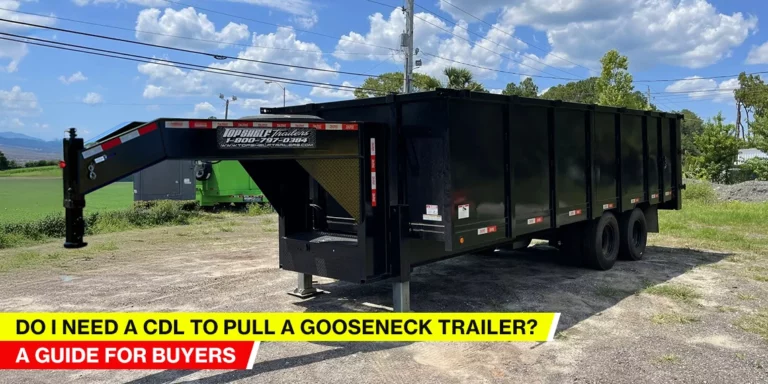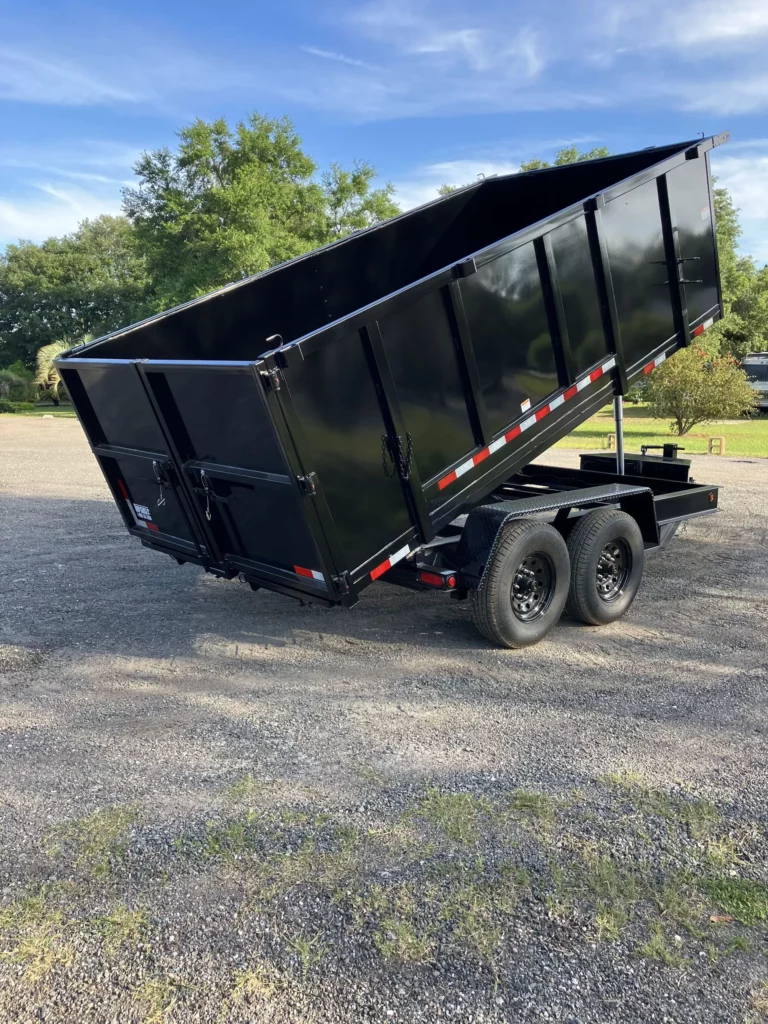At Top Shelf Trailers, we understand that every customer has unique requirements when it comes to dump trailers. From the type of materials being hauled to the specific conditions of a job site, a one-size-fits-all approach simply doesn’t cut it. In this behind-the-scenes look, we’ll walk you through how we customize a dump trailer to meet a client’s exact needs—from the first conversation to final delivery.
Understanding the Client’s Operational Goals
- Initial Consultation Every custom trailer build begins with a conversation. We start by asking detailed questions about the client’s work—what type of materials they’re hauling, average load weight, how often the trailer is used, terrain conditions, and any unique job site demands. This helps us identify key features they’ll need.
- Identifying Pain Points Often, clients come to us with frustrations about their current trailer setup. Maybe the bed is too shallow for debris removal, or the hydraulic system can’t handle the volume they’re moving. These real-world challenges guide our customization strategy and ensure we build a trailer that eliminates the guesswork.
Designing with Precision
- Size and Load Capacity Adjustments One of the first customizations we often make is to the trailer’s size. Whether the client needs a compact trailer for residential projects or a high-volume option for commercial debris removal, we adjust the bed length, side wall height, and overall volume capacity to match.
- Hydraulic System Upgrades If the client hauls heavy or uneven loads, we may recommend a dual-piston hydraulic system or a higher capacity scissor lift. These upgrades provide smoother lifts, reduce wear on the equipment, and improve tipping control, especially when working on uneven terrain.
- Axle and Suspension Options From tandem axles for balanced weight distribution to heavy-duty slipper spring suspensions for durability, we tailor these specs to ensure the trailer can handle its load safely and comfortably—even when fully loaded.
Adding Functional Features
- Tailgate Customizations Some clients require spreader gates for gravel or mulch, while others need barn doors that swing fully open for easy unloading of larger debris. We design tailgates to match those specific unloading needs.
- Side Wall Reinforcements and Extensions For clients in landscaping or demolition, reinforced side walls or removable side extensions can make all the difference. They allow for taller loads while keeping materials secure in transit.
- Toolboxes and Storage Clients who use tools regularly on job sites often ask for lockable toolboxes mounted to the frame. We also add underbody storage or ladder racks if needed, creating a true mobile workstation.
Electrical and Convenience Upgrades
- Lighting and Wiring Packages Whether it’s upgrading to LED lighting for better visibility or including weather-sealed wiring harnesses for long-term durability, we make sure every trailer’s electrical system is reliable and safe.
- Remote Control Systems For clients who want to operate the hydraulic lift wirelessly, we install remote control kits that add convenience and speed to loading/unloading jobs.
- Solar Charging and Battery Protection In high-usage environments, we often add a solar charging panel to maintain battery health and reduce downtime. We may also upgrade the battery size or add a trickle charger depending on client usage.
Final Build and Quality Check
- Fabrication Process Once all specifications are finalized, our team begins fabricating the trailer from the ground up. Every weld, joint, and bracket is inspected for structural integrity and adherence to the client’s design.
- Client Review and Walkthrough Before delivery, the client is given a complete walkthrough of the trailer—either in person or via video. We explain how to operate every system and verify that the final product meets or exceeds expectations.
- Follow-Up and Support Even after the trailer is delivered, we remain in contact with the client to answer any questions, ensure everything is working properly, and make minor adjustments if needed.
Conclusion
Customizing a dump trailer isn’t just about adding bells and whistles—it’s about solving real problems and delivering practical solutions that improve day-to-day operations. At Top Shelf Trailers, we take pride in understanding our customers’ needs on a granular level and delivering equipment that’s tailored to their workflow. Whether it’s upgrading a hydraulic system, modifying the bed size, or adding purpose-built accessories, our team is dedicated to building trailers that perform as hard as you do.





